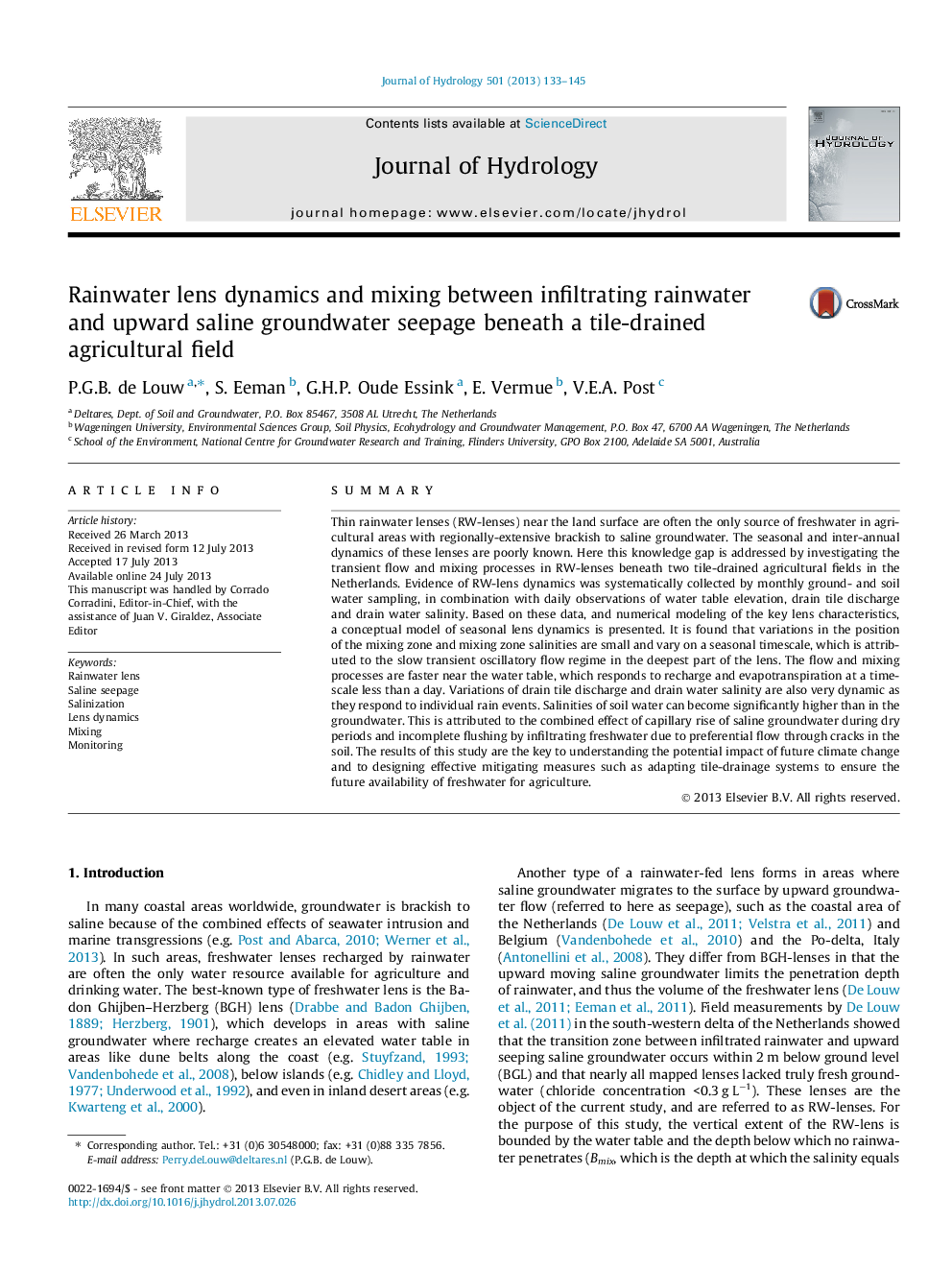| کد مقاله | کد نشریه | سال انتشار | مقاله انگلیسی | نسخه تمام متن |
|---|---|---|---|---|
| 6413523 | 1629947 | 2013 | 13 صفحه PDF | دانلود رایگان |
- Field data and modeling demonstrate seasonal RW-lens dynamics.
- Variations of mixing zone position are small, but lens thickness varies with water table elevation.
- Mixing processes are fastest near the water table.
- Salinities of soil water can become much higher than in groundwater due to dual-porosity nature of the unsaturated zone.
- Drain water salinity is strongly controlled by individual rainfall events.
SummaryThin rainwater lenses (RW-lenses) near the land surface are often the only source of freshwater in agricultural areas with regionally-extensive brackish to saline groundwater. The seasonal and inter-annual dynamics of these lenses are poorly known. Here this knowledge gap is addressed by investigating the transient flow and mixing processes in RW-lenses beneath two tile-drained agricultural fields in the Netherlands. Evidence of RW-lens dynamics was systematically collected by monthly ground- and soil water sampling, in combination with daily observations of water table elevation, drain tile discharge and drain water salinity. Based on these data, and numerical modeling of the key lens characteristics, a conceptual model of seasonal lens dynamics is presented. It is found that variations in the position of the mixing zone and mixing zone salinities are small and vary on a seasonal timescale, which is attributed to the slow transient oscillatory flow regime in the deepest part of the lens. The flow and mixing processes are faster near the water table, which responds to recharge and evapotranspiration at a timescale less than a day. Variations of drain tile discharge and drain water salinity are also very dynamic as they respond to individual rain events. Salinities of soil water can become significantly higher than in the groundwater. This is attributed to the combined effect of capillary rise of saline groundwater during dry periods and incomplete flushing by infiltrating freshwater due to preferential flow through cracks in the soil. The results of this study are the key to understanding the potential impact of future climate change and to designing effective mitigating measures such as adapting tile-drainage systems to ensure the future availability of freshwater for agriculture.
Journal: Journal of Hydrology - Volume 501, 25 September 2013, Pages 133-145
